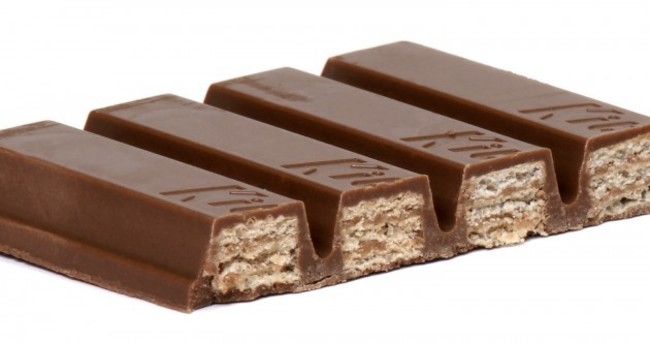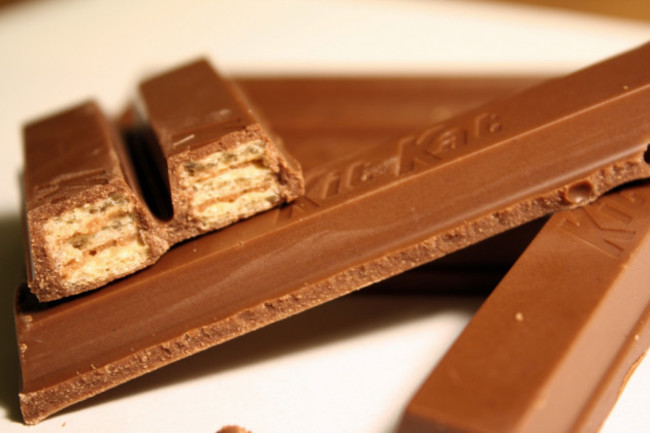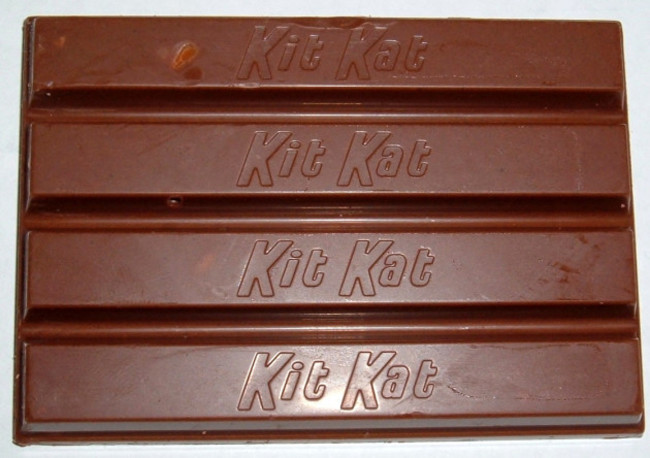IRELAND HAS A love affair with the humble Kit Kat bar – so much so that we can have arguments over what is the best way to eat them.
Now, if you inspect the inside of the Kit Kat you will of course see that the wafers are separated by a different type of chocolate than the outside layer.
And thanks to investigation work by Mental Floss based on a BBC documentary, they have discovered that the chocolate between the wafers is… mashed up Kit Kats.
Mashed up Kit Kats. Let that sink in for a second.
Mental Floss revealed this shocking fact yesterday, based on the BBC TV show Inside the Factory: How Our Favourite Foods are Made. As they report:
When they roll off the production line, quality assurance technicians remove the Kit Kats that have too many exterior air bubbles, off-center wafers, or any other imperfections, right down to those that simply aren’t shiny enough… But rather than being thrown away, those second-class bars are recycled back into the production process.
Understandable.
But as the top comment on the piece reveals, people have so many questions:
But what was between the layers of the first Kit Kat, then? And how do they make sure there are enough faulty Kit Kats to fill the non-faulty ones?
The origin story of the first Kit Kat must be investigated ASAP.
The only other online source featuring this claim is a very scientific question on Quora last year:
Presumably, this person learnt it from the BBC documentary.
But it’s safe to say that it’s not common knowledge:
All Kit Kat-lovers minds have just been blown
Next time we bite into one, we’ll have a whole new appreciation of what a Kit Kat really is.













COMMENTS (5)